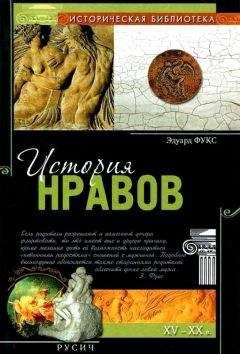Марк Хаузер - Мораль и разум. Как природа создавала наше универсальное чувство добра и зла
Flombaum J. & Santos L. (2005). Rhesus monkeys attribute perceptions to others // Current Biology, 75, 1—20.
Foot P. (1967). The problem of abortion and the doctrine of double effect // Oxford Review, 5, 5—15.
Foster K. R. & Ratnieks F. L. W. (2000). Facultative worker policing in a wasp // Nature, 407,692—693.
Frank R. H. (1988). Passion Within Reason: The Strategic Role of the Emotions. New York: Norton.
Frank S. A. (1995). Mutual policing and repression of competition in the evolution of cooperative groups 11 Nature, 377, 520—522.
Frazer J. G. (1910). A Treatise on Certain Early Forms of Superstition and Society. London: Macmillan.
Freire A., Eskritt M. & Lee K. (2004). Are eyes windows to a deceiver’s soul? Children’s use of another’s eye gaze cues in a deceptive situation // Developmental Psychology, 40, 1093—1104.
Frohlich N. & Oppenheimer J. A. (1993). Choosing Justice: An Experimental Approach to Ethical Theory. Berkeley: University of California Press.
Faster J. (1997). The Prefrontal Cortex: Anatomy, Physiology, and Neuropsychology of the Frontal Lobe. Philadelphia: Lippincott-Raven.
Galef В. G.,Jr. (1996). Social enhancement of food preferences in Norway rats: a brief review // С. M. Heyes & J. B. G. Galef (Eds.), Social Learning in Animals: The Roots of Culture (p. 49—64). San Diego: Academic Press.
Gallese V & Goldman A. (1998). Mirror neurons and the simulation theory of mindreading // Trends in Cognitive Science, 12, 493—501.
Gallese V, Keysets C. & Rizzolatti G. (2004). A unifying view of the basis of social cognition // Trends in Cognitive Science, 8, 398—403.
Gallistel C. R. & Gelman R. (2000). Non-verbal numerical cognition: from reals to integers // TICS, 4, 59—65.
Gallup G. G.,Jr. (1970). Chimpanzees: self-recognition // Science, 167, 86—87.
Gallup G. G.,Jr. (1991). Toward a comparative psychology of self-awareness: Species limitations and cognitive consequences // G. R. Goethals & J. Strauss (Eds.), The Self: An Interdisciplinary Approach (p. 121—135). New York: SpringerVerlag.
Garvey S. R (1998). Can shaming punishments educate? // University of Chicago Law Review, 65, 733.
Gaylin W. (2003). Hatred: The psychological descent into violence. New York: Public Affairs.
Gelman R. (1990). First principles organize attention to and learning about relevant data: number and the animate-inanimate distinction as examples // Cognitive Science, 14, 79—106.
Gelman S. A. (2003). The Essential Child: Origins of Essentialism in Everyday Thought. London: Oxford University Press.
Gentner T, Margoliasb D. & Nusshaum H. (in press). Recursive syntactic pattern learning in a songbird. Nature, still in press.
Gergely G. & Csihra G. (2003). Ideological reasoning in infancy: the naive theory of rational action // Trends in Cognitive Science, 7, 287—292.
Gergely G., Nadasdy Z, Csihra G. & Biro S. (1995). Taking the intentional stance at 12 months of age // Cognition, 56, 165—193.
Gert B. (1998). Morality: Its Nature and Justification. New York: Oxford University Press.
Gert B. (2004). Common Morality. New York: Oxford University Press.
Gibbon J., Church R. M., Fairhust S. & KacelnikA. (1988). Scalar expectancy theory and choice between delayed rewards // Psychological Review, 95, 102—114.
Gibbs J. C. (2003). Moral Development and Reality. Thousand Oaks, CA: Sage Publications.
Gilovich T, Griffin D. & Kabneman D. (2002). Heuristics and Biases: The psychology of intuitive judgment. Cambridge: Cambridge University Press.
Gintis H. (2000). Strong reciprocity and human sociality // Journal of Theoretical Biology, 206, 169—179.
Gintis H., Bowles S., Boyd R. & Fehr E. (2003). Explaining altruistic behavior in humans // Evolution and Human Behavior, 24, 153—172.
Gintis H., Smith E. & Bowles S. (2001). Costly signaling and cooperation // Journal of Theoretical Biology, 213, 103—119.
Girotto V, Light P. & Colboum C. J. (1988). Pragmatic schemas and conditional reasoning in children // Quarterly Journal of Experimental Psychology, 40A, 469— 482.
Goldberg E. (2001). The Executive Brain. New York: Oxford University Press.
Golding W. (1999). Lord of the Flies. New York: Penguin Books.
Goldman A. (1971). The individuation of action // Journal of Philosophy, 68, 761— 774.
Goldman A. (1979). The paradox of punishment // Philosophy and Public Affairs, 9, 42—58.
Goldman A. (1989). Interpretation psychologized // Mind and Language, 4, 161 — 185.
Goldman A. (1992). In defense of the simulation theory // Mind and Language, 7, Ю4—119.
Gomez J.-C. (2005). Species comparative studies and cognitive development // Trends in Cognitive Science, 9, 118—125.
Gordon N. (2001). Honor killings: An editorial // Iris, 42, http://iris.virginia.edu/ archives/42/nonfiction.html.
Gordon P (2004). Numerical cognition without words: evidence from Amazonia // Science, 306, 496—499.
Gordon R. (1986). Folk psychology as simulation // Mind and Language, 1, 158— 171.
Gould J. L. (1990). Honeybee cognition // Cognition, 37, 83—103.
Greene J. D. (2003). From neural ‘is’ to moral ‘ought’: what are the moral implications of neuroscientific moral psychology // Nature Neuroscience Reviews, 4, 847—850.
Greene J. D., Nystrom L. E., Engell A. D., Darley J. M. & Cohen J. D. (2004). The neural bases of cognitive conflict and control in moral judgment // Neuron, 44, 389—400.
Greene J. D., Sommerville R. В., Nystrom L. E., Darley J. M. & Cohen J. D. (2001). An fMRI investigation of emotional engagement in moral judgment // Science, 293,2105—2108.
Greenspan P. S. (1995). Practical Guilt. New York: Oxford University Press.
Griffiths P E. (1997). What Emotions Really Are. Chicago: University of Chicago Press.
Gyger M. & Marler P (1988). Food calling in the domestic fowl (Gallus gallus): the role of external referents and deception // Animal Behaviour, 36, 358—365.
Haidt J. (2001). The emotional dog and its rational tail: A social intuitionist approach to moral judgment // Psychological Review, 108, 814—834.
Haidt J. (2003). The moral emotions // R. J. Davidson & K. R. Scherer & H. H. Goldsmith (Eds.), Handbook of Affective Sciences (p. 852—870). Oxford: Oxford University Press.
Haidt J. & Joseph C. (2004). Intuitive ethics: how innately prepared intuitions generate culturally variable virtues // Daedalus, 55—66.
Haidt /., McCauley C. R. & Rozin P (1994). Individual differences in sensitivity to disgust: a scale sampling seven domains of disgust elicitors // Personality and Individual Differences, 16, 701—713.
Hala S., Chandler M. & Fritz A. S. (1991). Fledgling theories of mind: deception as a marker of three year olds’ understanding of false belief // Child Development, 62, 83—97.
Hamilton W. D. (1964a). The evolution of altruistic behavior 11 American Naturalist, 97, 354—356.
Hamilton W. D. (1964b). The genetical evolution of social behavior // Journal of Theoretical Biology, 7, 1—52.
Harbaugh W. T, Krause K. & Liday S. (2003). Children’s bargaining behavior: differences by age, gender, and height. Working pages.
Harbaugh W T, Krause К, Liday S. & Vesterlund L. (2003). Trust in children // E. Ostrom & J. Walker (Eds.), Trust and Reciprocity (p. 302—322). New York: Russell Sage Foundation.
Harbaugh W. T, Krause K. & Vesterlund L. (2001). Risk attitudes of children and adults: choices over small and large probability gains and losses // Experimental Economics, 5(7), 53—84.
Hardin G. (1968). The tragedy of the commons // Science, 162, 1243—1248.
Hare B.y Call ].yAgnetta B. & Tomasello M. (2000). Chimpanzees know what conspecifics do and do not see // Animal Behaviour, 59, 771—785.
Hare B.y Call J. & Tomasello M. (2001). Do chimpanzees know what conspecifics know? // Animal Behaviour, 61, 139—151.
Hare B.y Plyusnina /., Ignacio N.y Scbepina O., StepikaA., Wrangbam R.W.&t Truth. N. (2005). Social cognitive evolution in captive foxes is a correlated byproduct of experimental domestication // Current Biology, 15(3), 226—230.
Hare B. & Tomasello M. (2004). Chimpanzees are more skilful in competitive than in cooperative cognitive tasks // Animal Behaviour, 68, 571—581.
Hare R. D. (1993). Without Conscience. New York: Guilford Press.
Hare R. M. (1981). Moral Thinking: Its levels, method, and point. Oxford: Clarendon Press.
Harman G. (1977). The Nature of Morality: An Introduction to Ethics. New York: Oxford University Press.
Harris R L. (2000). The Work of the Imagination. Oxford: Blackwell Publishers.
Harris P. L. & Nunez M. (1996). Understanding of permission rules by preschool children // Child Development, 67, 1572—1591.
Harris R. (1989). Murder and Madness: Medicine, Law and Society in the Fin de Siecle. Oxford: Clarendon Press.
Hart B. L. & Hart L. A. (1989). Reciprocal allogrooming in impala, Aepyceros melampus // Animal Behaviour, 44, 1073—1084.
Hassani О. К & Cromwell H. C. (2001). Influence of expectation of different rewards on behavior-related neuronal activity in the striatum // Journal of Neurophysiology, 85, 2477—2489.
Hasselmo M. R., Rolls E. T & Baylis G. C. (1989). The role of expression and identity in the face-selective responses of neurons in the temporal visual cortex of the monkey // Behavioural Brain Research, 32, 203—218.
Hauser M. D. (1992). Costs of deception: cheaters are punished in rhesus monkeys // Proceedings of the National Academy of Sciences, 89, 12137—12139.
Hauser M. D. (1993). Rhesus monkey (Macaca mulatto} copulation calls: Honest signals for female choice? // Proceedings of the Royal Society, London, 254, 93— 96.
Hauser M. D. (1996). The Evolution of Communication. Cambridge, MA: MIT Press.
Hauser M. D. (1997). Minding the behavior of deception // A. Whiten & R. W Byrne (Eds.), Machiavellian Intelligence II (p. 112—143). Cambridge: Cambridge University Press.
Hauser М. D. (1998). Expectations about object motion and destination: Experiments with a nonhuman primate // Developmental Science, 1, 31—38.
Hauser M. D. (2000). Wild Minds: What Animals Really Think. New York: Henry Holt.
Hauser M. D. & Carey S. (1998). Building a cognitive creature from a set of primitives: Evolutionary and developmental insights // D. Cummins & C. Alien (Eds.), The Evolution of Mind (p. 51—106). Oxford: Oxford University Press.
Hauser M. D., Chen M. K., Chen E. & Chuang E. (2003). Give unto others: genetically unrelated cotton-top tamarin monkeys preferentially give food to those who altruistically give food back // Proceedings of the Royal Society, London, B, 270, 2363—2370.
Hauser M. D., Chomsky N. & Fitch W. T (2002). The faculty of language: What is it, who has it, and how did it evolve? // Science, 298, 1569—1579.
Hauser M. D. & Spelke E. (2004). Evolutionary and developmental foundations of human knowledge // M. Gazzaniga (Ed.), The Cognitive Neurosciences (p. 853—865). Cambridge, MA: MIT Press.
Hawkes K. (2003). Grandmothers and the evolution of human longevity // American Journal of Human Biology, 15, 380—400.
Hazlitt W. (1805/1969). An Essay on the Principles of Human Action and Some Remarks on the Systems of Hartley and Helvetius. Gainesville, FL: Scholars’ Facsimiles and Reprints.
Heider E & Simmel M. (1944). An experimental study of apparent behavior // American Journal of Psychology, 57, 243—259.




